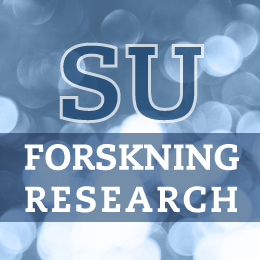Xiankun LiPhD student
About me
I am a Ph.D. candidate researching the mechanisms of soil carbon emissions during drying and rewetting by synthesizing data. My work advances understanding of this process through soil microbial carbon use strategies, comparisons between laboratory and field conditions, interactions with soil temperature, and microbial acclimation to long-term climate. The ultimate goal of my research is to refine and apply current findings to improve predictions of soil carbon emissions under climate change.
Research projects
Publications
A selection from Stockholm University publication database
-
Drying intensity and acidity slow down microbial growth recovery after rewetting dry soils
2023. Xiankun Li (et al.). Soil Biology and Biochemistry 184
ArticleRead more about Drying intensity and acidity slow down microbial growth recovery after rewetting dry soilsSoil microbes perceive drying and rewetting (DRW) events as more or less harsh depending on the previous soil moisture history. If a DRW event is not perceived as harsh, microbial growth recovers rapidly after rewetting (referred to as ‘type 1’ response), while a harsh DRW will be followed by a delayed growth recovery (‘type 2’ response). Predicting these responses based on pedoclimatic factors is important because they can determine how carbon is partitioned between growth (soil C stabilization) and respiration (C loss to the atmosphere). To characterize the microbially perceived harshness between the two extreme types 1 and 2, and its pedoclimatic drivers, we described microbial growth with a single logistic function and respiration with a rescaled gamma distribution using ∼100 growth and respiration datasets. These functions captured microbial growth and respiration rates well during the recovery phase after rewetting. Therefore, the fitted parameters from these functions could help us to capture the continuum of microbial recovery between type 1 and 2 and characterize harshness levels. The product of growth parameters τ (delay time) and b (the slope of the growth curve at time τ) was an effective index that could capture and quantify perceived harshness because it allowed separating type 1 and 2 responses better than τ or b alone or than any other parameter describing the growth or respiration response. The drier the soil before rewetting and the lower the pH, the higher was the perceived harshness (τ×b), the longer the delay of growth recovery, and the larger the CO2 loss at rewetting. Overall, this study places soil microbial responses to DRW along a continuous gradient from fast to slow recovery, where the faster the recovery, the better adapted the microbial community is to the DRW event.
-
Recovery of Soil Microbial Metabolism After Rewetting Depends on Interacting Environmental Conditions and Changes in Functional Groups and Life History Strategies
2024. Xiankun Li (et al.). Global Change Biology 30 (10)
ArticleRead more about Recovery of Soil Microbial Metabolism After Rewetting Depends on Interacting Environmental Conditions and Changes in Functional Groups and Life History StrategiesClimate change is causing an intensification of soil drying and rewetting events, altering microbial functioning and potentially destabilizing soil organic carbon. After rewetting, changes in microbial community carbon use efficiency (CUE), investment in life history strategies, and fungal to bacterial dominance co-occur. Still, we have yet to generalize what drives these dynamic responses. Here, we collated 123 time series of microbial community growth (G, sum of fungal and bacterial growth, evaluated by leucine and acetate incorporation, respectively) and respiration (R) after rewetting and calculated CUE = G/(G + R). First, we characterized CUE recovery by two metrics: maximum CUE and time to maximum CUE. Second, we translated microbial growth and respiration data into microbial investments in life history strategies (high yield (Y), resource acquisition (A), and stress tolerance (S)). Third, we characterized the temporal change in fungal to bacterial dominance. Finally, the metrics describing the CUE recovery, investment in life history strategies, and fungal to bacterial dominance after rewetting were explained by environmental factors and microbial properties. CUE increased after rewetting as fungal dominance declined, but the maximum CUE was explained by the CUE under moist conditions, rather than specific environmental factors. In contrast, higher soil pH and carbon availability accelerated the decline of microbial investment in stress tolerance and fungal dominance. We conclude that microbial CUE recovery is mostly driven by the shifting microbial community composition and the metabolic capacity of the community, whereas changes in microbial investment in life history strategies and fungal versus bacterial dominance depend on soil pH and carbon availability.
The ultimate goal of my research is to refine and apply current findings to improve predictions of soil carbon emissions under climate change.


